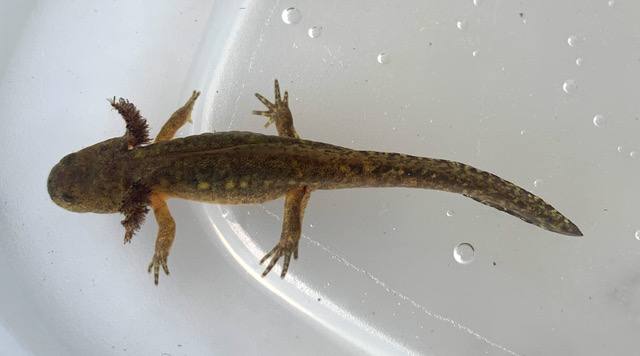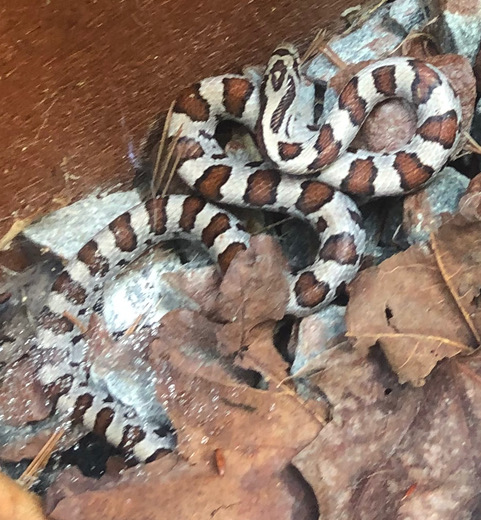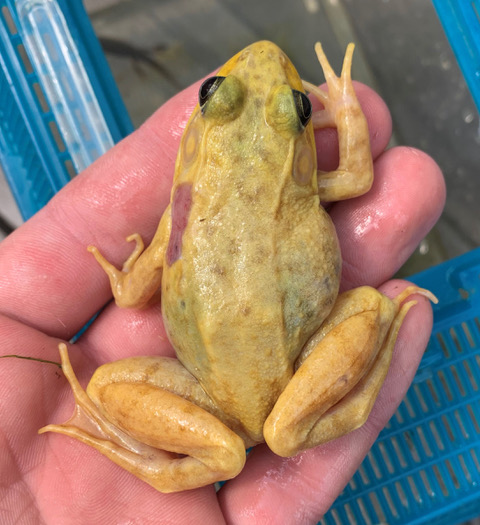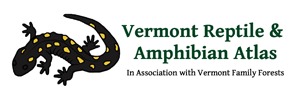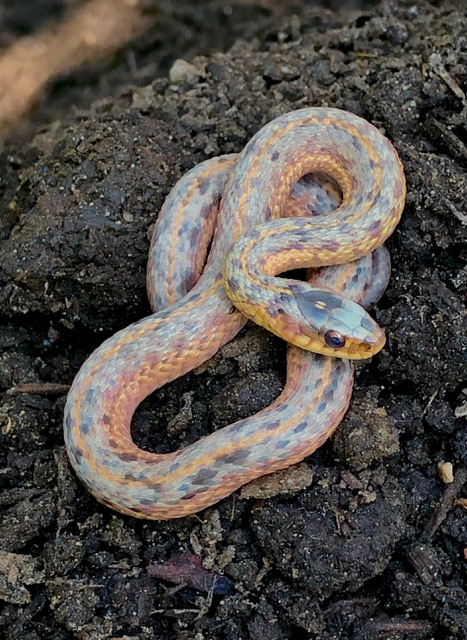
Herp Update: Current Herp Activity, Genetic Anomalies – July 9, 2023
Current Herp Activity
Frogs
We have been receiving quite a few records of the late calling species: American Bullfrog and Gray Treefrog. Thanks, and please do keep them coming. Remember, recordings of calls are as useful as a photo and often much easier to get.
We are also getting reports of our first metamorphosed Wood Frogs of the season. These frogs were eggs just this April and now have passed through their larval (tadpole) stage, grown legs, resorbed most of their tails, and are just now coming on land. Green Frogs are also starting to transform from tadpole to adult now, but they overwintered as tadpoles at least one winter, if not two. So, they were deposited as eggs either last year about this time, or two years ago.
Salamanders
We have recently received reports and photos of some large Spotted Salamander larvae that look like they are about to lose their external gills and move onto the land in the next few weeks. I will attach one photo sent in by Laura Miner.
My assistant Kate and I recently spent a day surveying for amphibians and reptiles in Barton and Walden. We found two of our target species (Spring Salamander and Northern Dusky Salamander) in Barton. However, we did not find a single Eastern Newt in either of those two towns. While hiking in the woods, near a pond, and after a rain, in the central Green Mountains, the bright orange juvenile newts (Red Efts) can be difficult to avoid, but not so in the north eastern corner of the state. Eastern Newts can be very hard to find in in the Northeast Kingdom. We have seventeen towns in Vermont from which we have no photo-vouchers of Eastern Newts. In eleven of those towns (and cities, gores, & grants) no one has ever reported even seeing a newt. I will attach a list of all seventeen of the towns from which we need reports and photos. If you live in, or visit any of those towns, please do keep your eyes open and camera ready for a newt.
Turtles
The reports of female turtles on lawns and roadsides has slowed considerably. Apparently most female turtles are done laying their eggs.
Snakes
We have received quite a few reports of Ring-necked Snakes recently. This harmless and beautiful little snake is often associated with loose rock. Decorative stone walls used for landscaping are a favorite hide out. They are primarily nocturnal, so usually you have to move some rock or other cover objects to find them. They are an egg-laying snake (as opposed to those that give live birth), and most egg layers are missing from the Northeast Kingdom, but Ring-neckeds are found almost statewide.
Genetic Anomalies
We have also received photos of some unusually colored herptiles over the past few weeks. We are sent a few photos of these genetic oddities every year. Some, like blue-colored Green Frogs are fairly common, others are far more unusual. I will attach some photos of the more unique ones for you.
The photo of the unusually beautiful Common Gartersnake was taken by Craig Newman. It may have a shortage of melanin (hypo-melanistic), or perhaps too much yellow pigment (xanthic). In any case, I think it is stunning.
The photo of the Eastern Milksnake was taken by Jake Irish. It has far more white in its pattern than is usual and the white is unusually bright.
The photo of the yellow (leucistic) Green Frog was taken by Ethan Marsh.
Check out our new Pocket Guide to the Amphibians of Vermont at:
www.vtherpatlas.org/support-and-funding/amphibian-field-guide/
